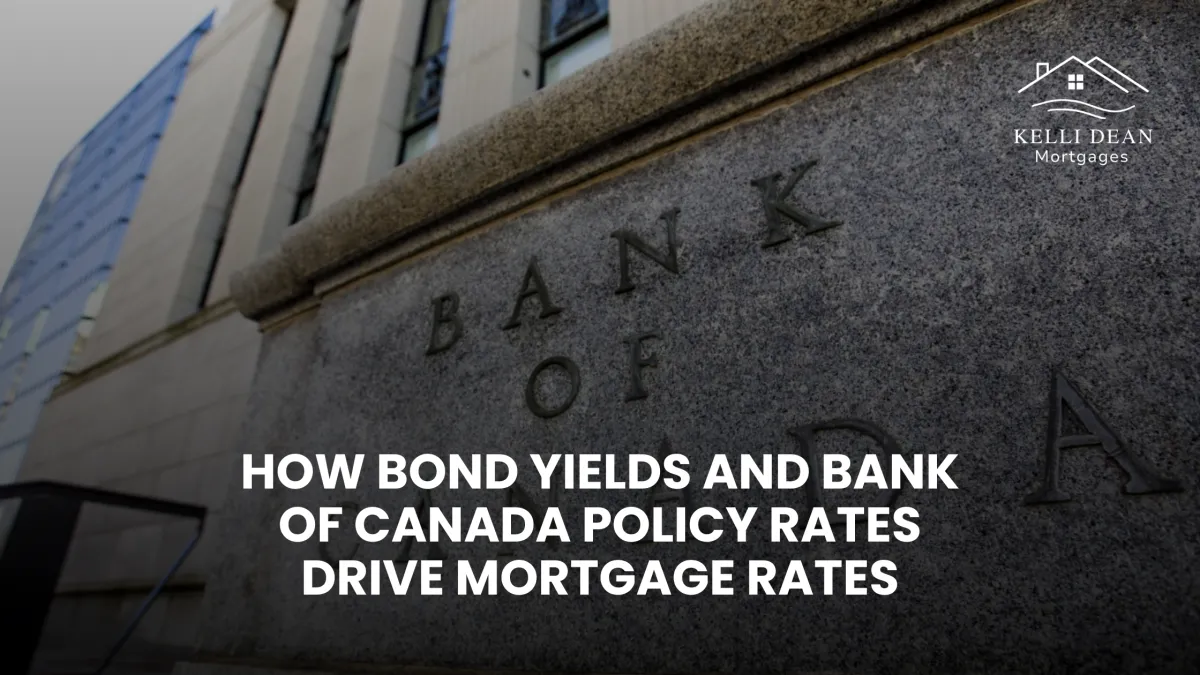Mortgage Blogs
Stay up to date with the recent industry news and mortgage trends.

How Bond Yields and Bank of Canada Policy Rates Drive Mortgage Rates
How Bond Yields and Bank of Canada Policy Rates Drive Mortgage Rates: What to Expect Through 2026
As your mortgage broker, I believe one of the most important conversations we can have is around why mortgage rates move, what is driving them now, and what might happen over the next year. Below I explain how bond yields and Bank of Canada (BoC) decisions influence what you pay. Then I walk through where things look to be headed through the remainder of 2026, with risks you should watch.
The Mechanics: Bond Yields, BoC Policy Rate, and Mortgage Rates
Government Bond Yields
The yield on government bonds (especially the 5-year Government of Canada bond) is a key benchmark for fixed-rate mortgages. Lenders see these yields as the starting cost of funds for a fixed-period mortgage, then add spreads (for credit risk, liquidity, operations, profit) to that base.
When bond yields rise, particularly on mid-term durations (3-5 years), you can expect fixed mortgage rates to follow. If yields drop, fixed rates tend to soften, all else equal.
Bank of Canada Policy / Overnight Rate
The BoC’s overnight policy rate (often called the target for the overnight rate) is what banks use in lending to each other. It influences prime, which in turn influences variable-rate mortgages, home equity lines of credit (HELOCs), adjustable mortgages, etc.
BoC uses its rate policy as its main tool to control inflation and influence economic activity: higher rates slow borrowing and spending; lower rates encourage activity when inflation is under control. Because variable mortgage rates are tied more directly to prime, they respond more immediately to BoC moves than fixed rates do.
The Spread: Why Mortgage Rates > Bond Yields
Fixed mortgage rates are always higher than comparable bond yields because of added risk and cost: default risk, administrative costs, pre-payment risk (if people pay off or refinance early), liquidity risk, profitability. The “spread” between bond yields and fixed mortgage rates is an important metric—and sometimes lenders widen this spread when markets are volatile or risk is perceived to be high.
Other Influences
Inflation expectations, global economic conditions (interest rates elsewhere, supply‐and‐demand for bond issuance), fiscal policy, and debt‐issuance by government all feed into both bond yields and BoC decisions.
Mortgage lenders also compete; so market competition will push rates lower if bond yields stay steady or fall. Conversely, if yields are rising and lenders anticipate that risk, they may pre-emptively raise fixed rates.
Where Things Stand Now (As of Late 2025)
To give you the latest snapshot:
The Bank of Canada’s policy (overnight) rate is 2.75%, following several cuts since mid-2024. The Bank has paused after those cuts.
The 5-year Government of Canada bond yield is about 2.80-2.90% (recent days’ data placing it near ~2.87%) depending on exact benchmark and pricing.
What this means practically:
Variable/adjustable mortgages and HELOCs are benefitting (or will benefit) more directly, sooner, from BoC rate cuts (if they occur), since their rates adjust with prime or other short-term benchmarks.
Fixed mortgage rates reflect what bond yields have already done (or are expected to do), but with some lag—and with spread adjustments depending on lenders’ perceptions of risk and competition.


Risks and Key Unknowns to Watch
Inflation surprises: If inflation stays above target (or rebounds due to global energy, supply chain, or other pressures), bond yields could spike, prompting the BoC to pause cuts or even raise.
Global interest rate environment: U.S. Federal Reserve, European Central Bank and others will influence bond markets. If rates abroad are high, investors may demand higher yields in Canada to keep up.
Government debt issuance & fiscal policy: Large deficits and heavy borrowing increase supply of bonds, influencing yields upward.
Housing market strength and renewals: A lot of mortgages are up for renewal in the next couple of years for people who took them when rates were very low. When those renewals come, borrowers will feel effects of higher rates. That in turn can affect consumer spending and broader economic growth—and may shape BoC policy.

What This Means for You (Mortgage Planning Advice)
Given all of the above, here are some strategies and considerations:
If you have a fixed-rate mortgage or plan to lock in a fixed rate, now might be a time to consider locking in if you believe bond yields are near a peak, or if you want certainty ahead of possible renewals.
If you have a variable rate mortgage or HELOC, and you are comfortable with some level of risk, you may benefit if BoC cuts but keep an eye on inflation signs (which could delay cuts).
For renewals, it’s important to start discussions early. The spread between what your current rate is and what you might be offered can be significant, especially in volatile times.
Shop around: Different lenders (banks vs. monoline lenders) have different cost structures and spreads. Sometimes non-bank lenders can offer slightly more aggressive fixed-rate spreads, though they may come with trade-offs (e.g. less flexibility, fewer product features).
Monitor bond yields and BoC statements: Data like inflation, employment, and global risks (trade, commodity prices) will give signals before rate announcements occur.
Bottom Line Prediction through End of 2026
Putting everything together, my best estimate for mortgage rates (for a typical, well-qualified borrower) by year-end 2026 is:
5-year fixed mortgage rates in the ~3.8%-4.2% range under favorable conditions; more likely around 4.0%-4.5% if bond yields remain somewhat elevated or spreads widen.
Variable or adjustable mortgages are likely to be lower than fixed in many scenarios, especially after BoC begins or continues rate cuts; but variable rates will likely remain above the overnight BoC rate plus prime spreads.
If you have any questions about what this means for your situation (purchase, renewal, refinance, etc.), I’m happy to walk through different scenarios. Understanding the levers helps make better decisions.
Kelli Dean ~ We Have a Mortgage For That !
📞 403-877-8349
📞 778-694-3863 (FUND)
Trusted Guidance, Proven Success

Kelli Dean | Mortgage Broker
(403) 877-8349
Assistance Hours
Mon – Fri 9:00am – 8:00pm
Saturday/Sunday – CLOSED
Get In Touch With
(403) 877-8349
Assistance Hours
Mon – Fri 9:00am – 8:00pm
Saturday/Sunday – CLOSED
Contact Us


© 2025 KELLI DEAN MORTGAGES - All Rights Reserved.
Kelli Dean, Mortgage Broker 504341
Verico Compass Group
